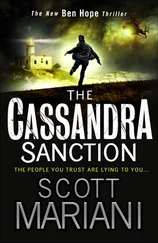Like many young men, Rooney had joined the Air Force with dreams of becoming a fighter pilot.
His grades in flight school had put that dream out of reach, at least temporarily. He respected the B-52 but didn’t enjoy flying it; it was too much like driving a truck.
That morning, while Wendorf was teaching Sunday school, Rooney, a practicing Catholic, went to Mass. (“I may have been doing something wild the night before,” he said, “but I’m not telling.”) Then he changed into uniform and drove his big, white 1963 Chevy Impala convertible to headquarters. The parking lot was nearly empty that Sunday, so he parked illegally in a senior officer’s spot. He figured he’d be back before the officer showed up for work.
The third pilot that day was Major Larry Messinger, at forty-four the oldest and most experienced member of the crew and less inclined to joking around. He was on board as the relief pilot, standard practice for long flights. Messinger had served in the Air Force for more than twenty years, collecting a cluster of medals along the way. When the United States entered World War II, he signed up for the Army Air Forces right away and was soon rumbling over Germany in a B-17 bomber. On his sixth mission, while bombing an oil refinery, he took fire and lost an engine. Headed for a crash landing in a wheat field, his plane’s left wing caught a wire strung between two telephone poles. The B-17 cartwheeled end over end, finally crashing on its back. Messinger and the copilot were suspended upside down, hanging from their seat belts. They unfastened their belts and dropped into the wreckage, finding themselves in the no-man’s-land between the German and American lines.
Badly injured, the two men struggled to the U.S. side and huddled on the front lines with the Seventh Armored division for a week before they were airlifted out. Messinger spent two months in an English hospital before getting back into the air, flying twenty-nine more missions before the end of the war. He later flew B-29s over Korea, where he “got shot up a bunch of times but never shot down.” In his two combat tours, he flew seventy missions. Now he worked as an air controller at Seymour Johnson, filling in as a relief pilot when needed. Tall and trim, he had a long face and serious, steady eyes.
After the briefing, the three pilots walked out onto the tarmac, looked over their B-52, and then went to the bomb bay to inspect the four hydrogen bombs they’d be carrying that day. Each bomb packed 1.45 megatons of explosive power, about seventy times as much as the bomb that destroyed Hiroshima. Rooney put a hand on each of them and gave a good tug, just to make sure they were locked in tight. Then the pilots climbed inside the plane with the rest of the crew to begin the systems check. They found two small problems: the UHF radio wasn’t working right, and neither was one of the oil pressure gauges. By the time these were fixed, the crew was running eleven minutes late. The plane lumbered down the long runway and crept into the air, just after 6 p.m. Once they were airborne, Wendorf lit up a cigarette and settled in for the ride.
It was a perfectly ordinary Sunday in Cold War America. The big news stories were an army coup in Nigeria that had left two government ministers dead and a proposed $3 billion spending hike for President Lyndon Johnson’s Great Society programs. Also, Secretary of State Dean Rusk, facing a failed “peace offensive” in Vietnam, told reporters that the U.S. government would consider “all necessary military measures” against Communist aggression in Southeast Asia. News analysts were trying to figure out exactly what that meant. And 35,000 feet above it all, Wendorf turned his plane east and headed toward Russia.
Over the next twenty-three hours or so, Wendorf and his crew, in tandem with another B-52, planned to fly across the Atlantic, circle over the Mediterranean, and then — unless they heard otherwise — turn around and come home. Wendorf’s flight, part of a program called airborne alert, was a key activity of the Strategic Air Command, the nuclear strike component of the U.S. Air Force. In 1966, most Americans still assumed that the United States and the USSR stood, at all times, on the brink of nuclear war. Many believed — with an unshakable, almost religious fervor — that it was SAC, and these highly visible bomber flights, that kept the Soviets in check.
SAC’s growth over the two previous decades had been explosive. In 1945, when America had dropped “Fat Man” and “Little Boy” on Hiroshima and Nagasaki, SAC didn’t exist and the United States owned exactly two atomic bombs. By 1966, SAC was the most powerful force in military history. The primary guardian of America’s nuclear arsenal, it controlled the bulk of the nation’s 32,193 nuclear warheads, as well as 674 bombers, 968 missiles, and 196,887 people. The commander of SAC directed the Joint Strategic Target Planning Staff, which selected America’s nuclear targets. SAC supplied much of the military intelligence and got the lion’s share of the United States’ defense money. To many inside and outside the military, SAC seemed all-powerful and unstoppable. Their influence was so great that it seemed perfectly reasonable — even necessary — for pilots to fly toward Russia, during peacetime, with four hydrogen bombs in their plane.
The story of the Strategic Air Command — its origin, mission, and philosophy — lay at the heart of the Cold War. And the story of SAC, and thus the story of Charles Wendorf’s ill-fated flight, began during World War II, before humans had invented nuclear bombs, before people dreamed of nuclear war, and before the U.S. Air Force even existed. World War II launched the Air Force into being and spawned the atomic weapons that made it preeminent among the services. The war also shaped the military ideas of a tough young general named Curtis Emerson LeMay, teaching him the lessons he needed to turn SAC into the most powerful fighting force the world had ever seen.
At dusk on March 9, 1945, on an airstrip on the South Pacific island of Guam, an American B-29 Superfortress sped down a runway and lifted off just as the sun dropped below the horizon. One minute later, another B-29 followed, its four churning propellers roaring it into the sky. Again and again, American bombers took off from two runways in Guam, one minute after another for almost three hours. At the same time, bombers lifted off from nearby Saipan and Tinian. By 8:10 p.m., 325 American planes were flying toward Tokyo, filling the sky in a massive, roaring herd. That night, the bombers would make history in the deadliest bombing raid of World War II. This mission over Tokyo would cement the future of the Air Force and the legend of Curtis LeMay.
The bombing raid was a gamble. LeMay, a tough, reticent, thirty-eight-year-old general, was well known for his ability to solve problems and whip struggling outfits into shape. He had done it earlier in the war in Europe and China, and now he was in charge of the ailing 21st Bomber Command in Guam. LeMay had been running the show since January, but so far he hadn’t fared much better than his predecessor, who had been fired. LeMay knew that if he didn’t get results soon, he would be sent packing as well.
LeMay’s assignment in Japan was the same one he had had in Europe: bomb the enemy’s factories, gas depots, and ports and destroy its ability to wage war. But Japan had thrown him a few curveballs. First, the weather over the country was terrible for bombing — clouds covered the major cities almost every day, making accurate visual targeting nearly impossible. And at 35,000 feet, the powerful jet stream blew bombers (and bombs) off course and forced planes to use an inordinate amount of fuel. Each four-engine B-29 needed twenty-three tons of fuel just to get from Guam to Tokyo and back, leaving room for only three tons of bombs. In his first two months in the Pacific, LeMay had learned these facts the hard way, through a series of embarrassing missions where his bombers hit only a few targets by chance.
Читать дальше











